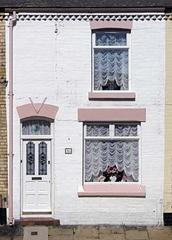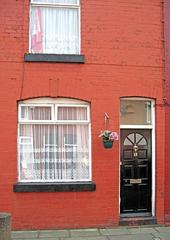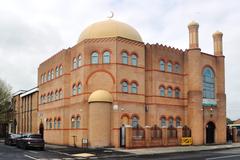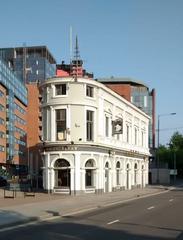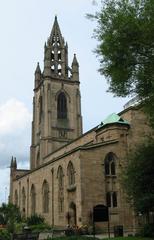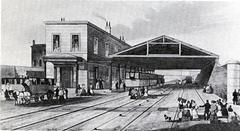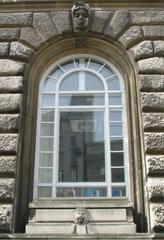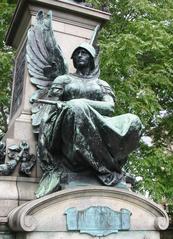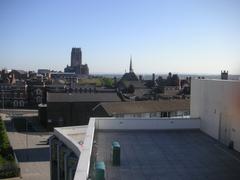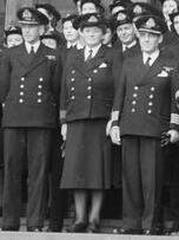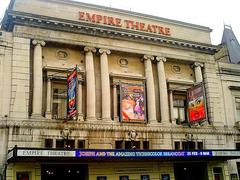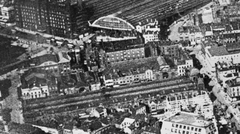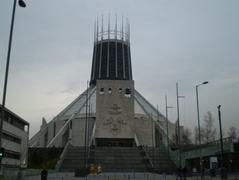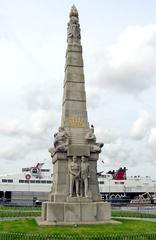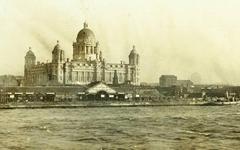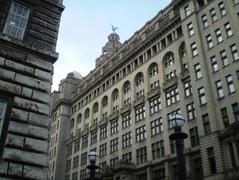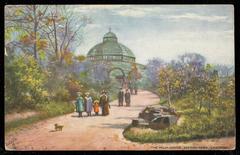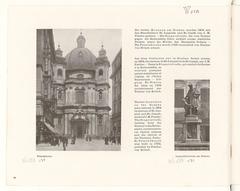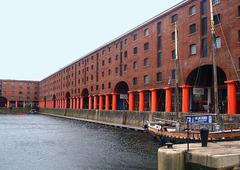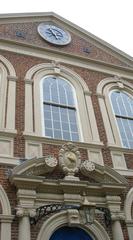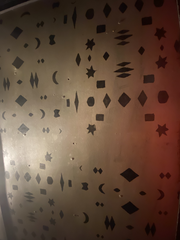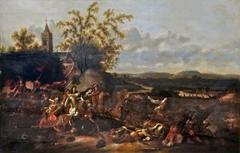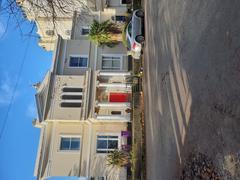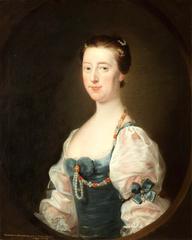
Liverpool Central High Level Railway Station: Complete Visitor Guide, Tickets, and Historical Insights
Date: 04/07/2025
Introduction
Liverpool Central High Level Railway Station remains a landmark of Liverpool’s rich transport legacy, even though the original station building was demolished in the 1970s. Once a grand Victorian terminus, it played a pivotal role in shaping the city’s growth, connecting Liverpool with major British cities, and serving as a hub of civic life. Today, while the High Level station is gone, its story continues through the bustling modern Liverpool Central Station and the Central Village redevelopment. This guide details the station’s historical significance, practical visiting information, ticketing, accessibility, and nearby cultural attractions, making it an essential resource for visitors and history enthusiasts alike (Liverpool Echo; LiverpoolWorld; Wikipedia).
Contents
- History and Construction
- Key Role in the Rail Network
- The Low Level Expansion and Mersey Railway
- Social and Wartime History
- Decline, Demolition, and Redevelopment
- Architectural and Cultural Legacy
- Visitor Information: Hours, Tickets, Accessibility, and Getting There
- Guided Tours, Events, and Photographic Opportunities
- Nearby Attractions and Cultural Developments
- FAQs
- Notable Facts and Figures
- Summary and Visitor Tips
- Sources and Further Reading
History and Construction
Opened on 1 March 1874 by the Cheshire Lines Committee (CLC), Liverpool Central High Level Railway Station replaced the earlier Brunswick station and quickly became one of the region’s largest and most impressive stations. Designed with a grand three-storey façade and a 65-foot-high iron and glass train shed, it featured six expansive platforms and served as the CLC’s headquarters (LiverpoolWorld; Wikipedia).
Strategically located fronting Ranelagh Street in the heart of Liverpool, the station’s architecture embodied Victorian ambition, symbolizing the city’s commercial power during the industrial age.
Key Role in the Rail Network
Liverpool Central High Level was a vital regional and national rail hub, offering fast connections to Manchester Central, London (St Pancras and Marylebone), Hull, Harwich, Stockport Tiviot Dale, and Southport Lord Street. The 45-minute journey to Manchester Central was renowned as the quickest between the two cities (Wikipedia).
Serving as the administrative centre for the CLC, the station underscored Liverpool’s importance in the UK’s transport infrastructure.
The Low Level Expansion and Mersey Railway
In 1892, Liverpool Central’s connectivity expanded further with the addition of the Low Level underground platforms as part of the Mersey Railway’s extension to Birkenhead. This made Liverpool Central one of the earliest multi-level urban railway stations in the UK. Passengers could transfer easily between surface and underground lines, setting a precedent for modern urban transit integration (Wikipedia).
Social and Wartime History
Beyond transport, Liverpool Central High Level was deeply woven into the city’s social fabric. During World War II, it functioned as a major evacuation point for children and a centre for troop movements. The bustling concourse, with its famous clock, was a popular meeting place for generations of Liverpudlians (Liverpool Echo).
Decline, Demolition, and Redevelopment
The postwar period saw a decline in rail travel, accelerated by changing transportation trends and the Beeching Report of 1963, which recommended widespread railway closures. The High Level platforms were gradually decommissioned, and the station ultimately closed and was demolished in 1973 (LiverpoolWorld).
In 1977, a new underground Liverpool Central Station opened on the same site as part of the Merseyrail network. Today, the Central Village development occupies the former High Level site, blending retail, dining, and cultural spaces.
Architectural and Cultural Legacy
The station’s original design, with its soaring train shed and ornate façade, was a monument to Liverpool’s Victorian-era ambition. Its early adoption of multi-level platforms anticipated modern trends in urban transport. The current station, serving over 11 million journeys annually, is Liverpool’s busiest and a key interchange in the North West (LiverpoolWorld).
Commemorative plaques and displays in the station and surrounding area highlight its enduring influence on Liverpool’s urban identity.
Visitor Information: Hours, Tickets, Accessibility, and Getting There
Visiting Hours:
- Liverpool Central Station is open daily, typically from 5:30 AM to midnight. Check Merseyrail’s website for the most up-to-date service times.
Tickets:
- Tickets can be purchased at staffed counters, self-service machines, and online. Smartcards and season tickets are supported (National Rail).
Accessibility:
- The station is fully accessible, with step-free access, lifts, tactile paving, accessible toilets, induction loops, and staff assistance available. Wheelchair users can access all platforms.
Getting There:
- Centrally located at Ranelagh Street, Liverpool Central is easily reached by local buses, taxis, and on foot from major hotels and attractions.
Guided Tours, Events, and Photographic Opportunities
- Guided Tours: While there are no dedicated tours of the demolished High Level station, many walking tours of Liverpool’s heritage include the Central Village area and the station’s history.
- Events: Liverpool’s museums and cultural organizations frequently host exhibitions on railway heritage; check Visit Liverpool for current events.
- Photography: The station’s entrances, Central Village development, and nearby streets offer engaging photographic backdrops blending historic and modern Liverpool.
Nearby Attractions and Cultural Developments
- Liverpool Lime Street Station: The city’s grand Victorian mainline terminus (Show Me The Journey).
- Central Village: Retail and dining complex built on the former High Level site.
- Bold Street: Known for independent shops and eateries.
- Merseyside Maritime Museum: Chronicling Liverpool’s port history.
- Royal Albert Dock: A major heritage and leisure destination.
- Knowledge Quarter & Georgian Quarter: Nearby districts rich in history and architecture.
Major urban regeneration projects, including the £5 billion Liverpool Waters initiative and the revitalization of the Royal Albert Dock, are transforming the city’s waterfront and cultural landscape (Place North West).
Frequently Asked Questions (FAQs)
Q: Can I visit the original Liverpool Central High Level station?
A: The original High Level station was demolished in 1973. Visitors can explore the modern Liverpool Central Station on the same site and learn about its history through plaques and local museums.
Q: What are the station’s opening hours?
A: Liverpool Central Station is open daily, typically from 5:30 AM to midnight.
Q: Where can I buy tickets?
A: At station ticket offices, self-service machines, or online (National Rail).
Q: Is the station accessible?
A: Yes, there is step-free access, accessible toilets, lifts, and staff assistance.
Q: What are some nearby attractions?
A: Liverpool Lime Street Station, Central Village, Bold Street, Merseyside Maritime Museum, Royal Albert Dock, and more.
Notable Facts and Figures
- Opening Date: 1 March 1874
- Demolition Date: 1973
- Platforms: 6 (High Level)
- Height of Train Shed: 65 feet (20 m)
- Annual Journeys (2023): Over 11 million (current station)
- Key Destinations Served: Manchester, London, Hull, Harwich, Southport, Stockport
- Integration with Mersey Railway: 1892 (Low Level platforms)
- Current Status: Modern Merseyrail hub, Central Village development (LiverpoolWorld).
Summary and Visitor Tips
Liverpool Central High Level’s story is a testament to the city’s adaptability and heritage. While the original structure no longer stands, its legacy endures through the busy modern station, the Central Village redevelopment, and the city’s ongoing cultural and economic regeneration. For visitors, Liverpool Central offers a convenient and accessible gateway to the city’s top attractions, rich urban history, and vibrant culture. Utilize digital tools like the VisitLiverpool app, the Audiala app, and Merseyrail’s website for up-to-date information and travel planning.
Sources and Further Reading
- This is a sample text. (Liverpool Echo)
- This is a sample text. (Wikipedia)
- This is a sample text. (LiverpoolWorld)
- This is a sample text. (Lonely Planet)
- This is a sample text. (Place North West)
- This is a sample text. (National Rail)
- This is a sample text. (Visit Liverpool)
- This is a sample text. (Show Me The Journey)



